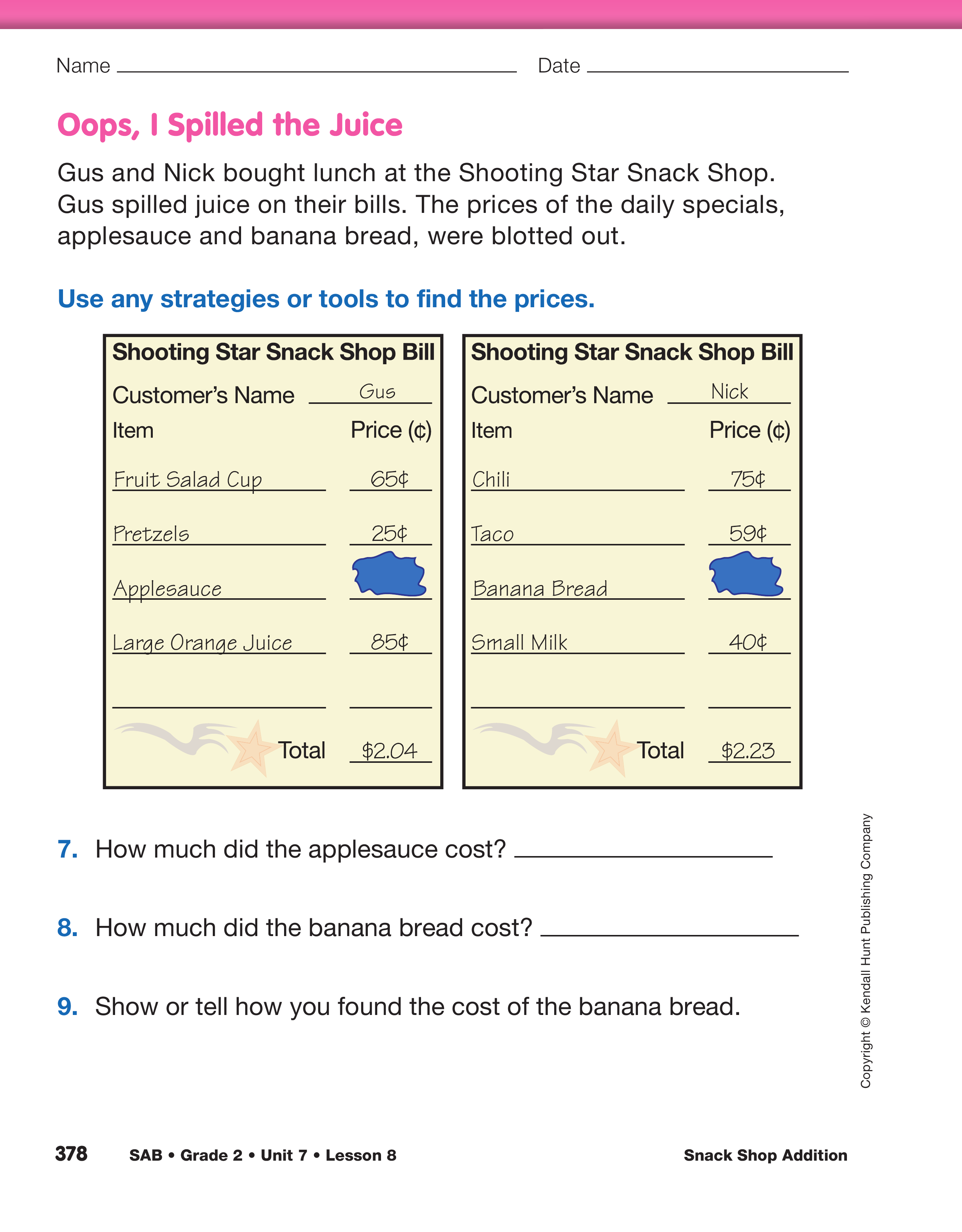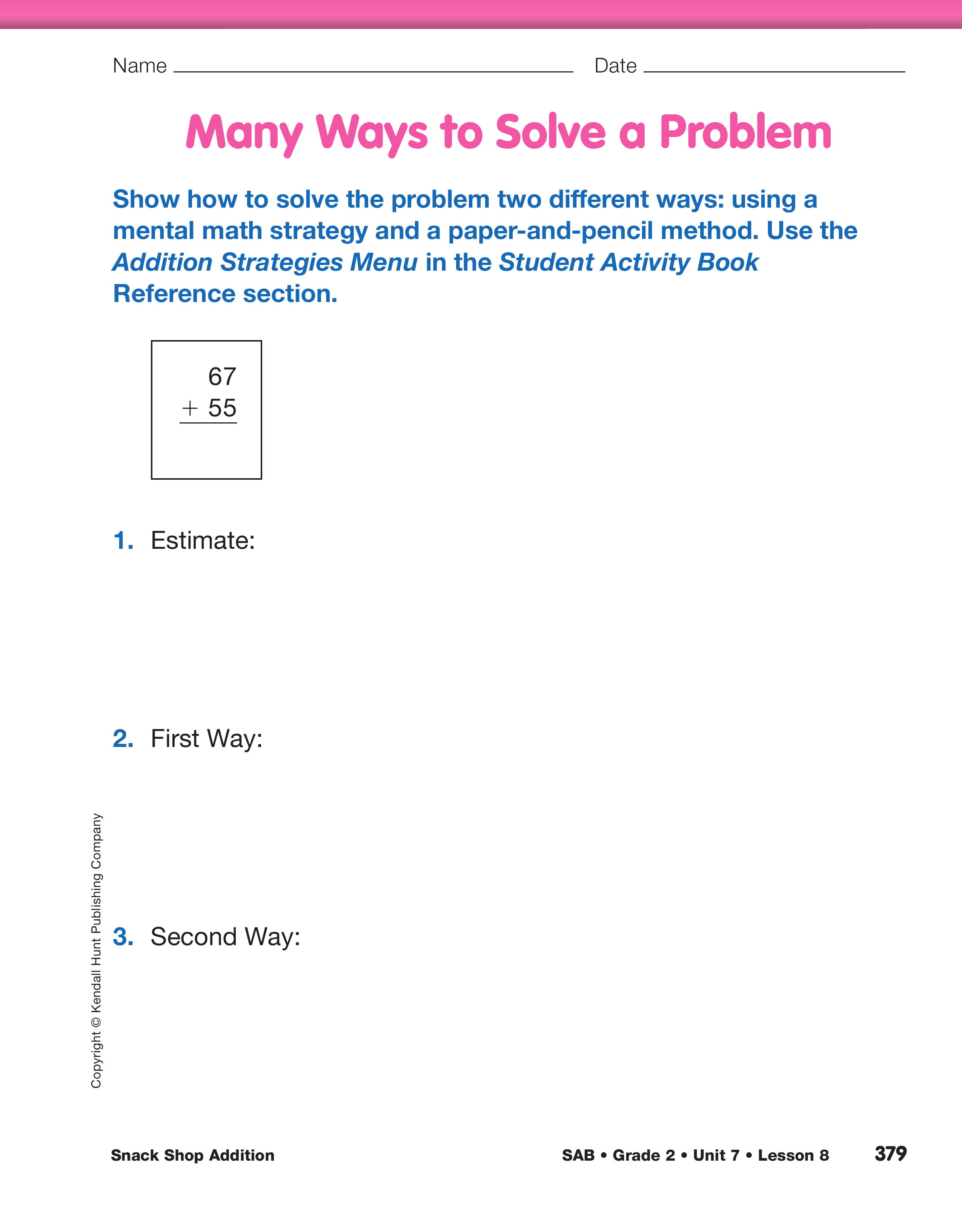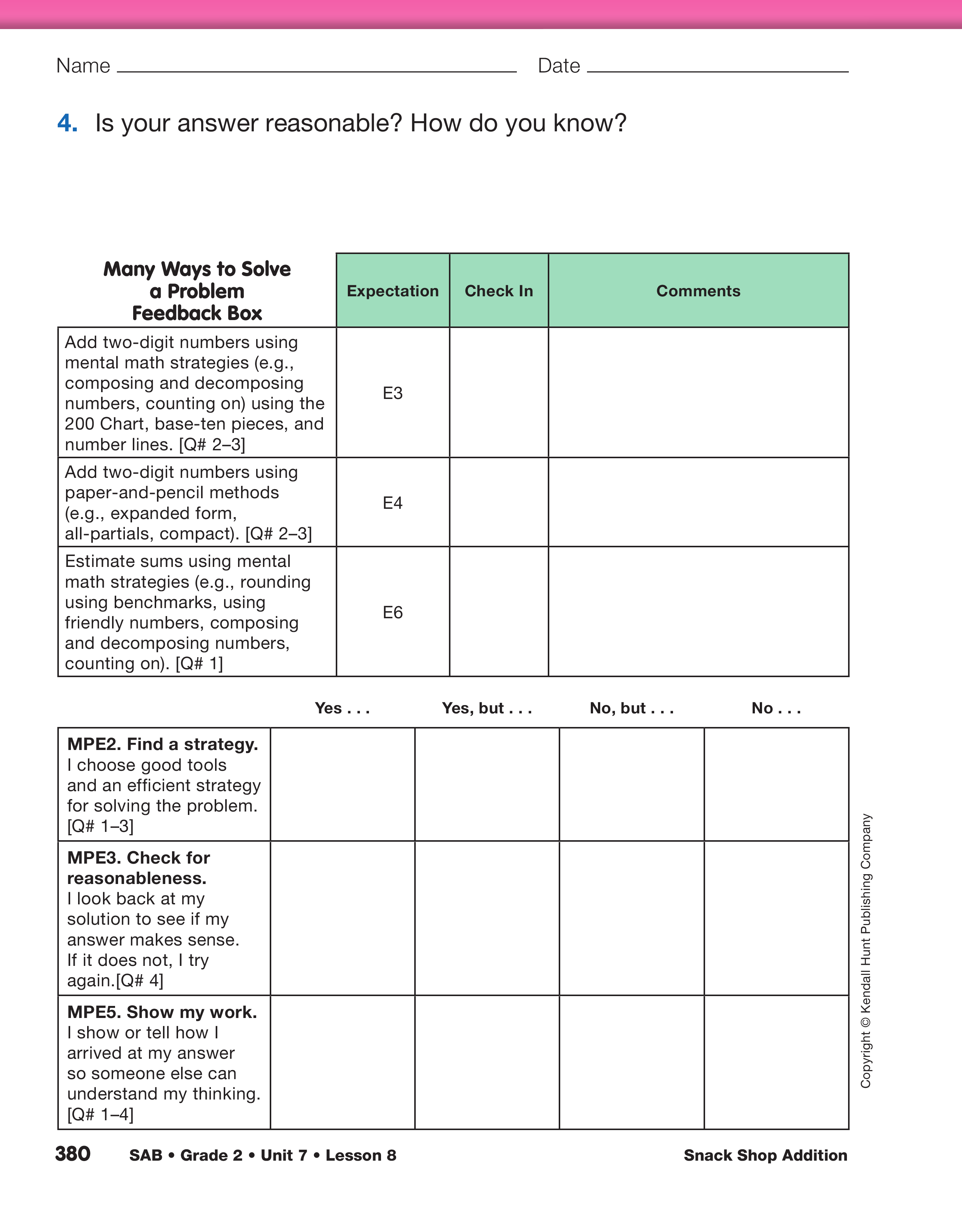Snack Shop Addition
Est. Class Sessions: 2Summarizing the Lesson
Display the following problem:
| 55¢ |
| 79¢ |
| 85¢ |
| + 99¢ |
Ask:
Discuss students’ ideas. If they do not suggest it, remind students that a calculator is one of the many tools available to solve problems. To solve this multiple addend problem, it may be an appropriate choice. Stress to students that a calculator is not always correct and that you have to know what a reasonable answer will be before you use a calculator.
Ask:
Have students use the calculator to solve the problem.
- Compare the estimate to the sum that your calculator displays. Is it reasonable? (The sum the calculator shows is $3.18, so if the estimate and the sum are close, the sum seems reasonable.)
Assign Questions 7–9 in the Oops, I Spilled the Juice section of the Snack Shop Bills pages in the Student Activity Book to student pairs. Encourage students to use any strategies or tools, including calculators, to find the two missing addends on the page. Some students may see this as an addition problem and others may solve it as a subtraction problem. Either is acceptable.
Upon completion, display and direct students to the Addition Strategies Menu in the Student Activity Book Reference section and ask:
Assign the Many Ways to Solve a Problem page in the Student Activity Book for students to complete individually. Provide access to 200 Charts, desk number lines, base-ten pieces, and the strategies menu.


















